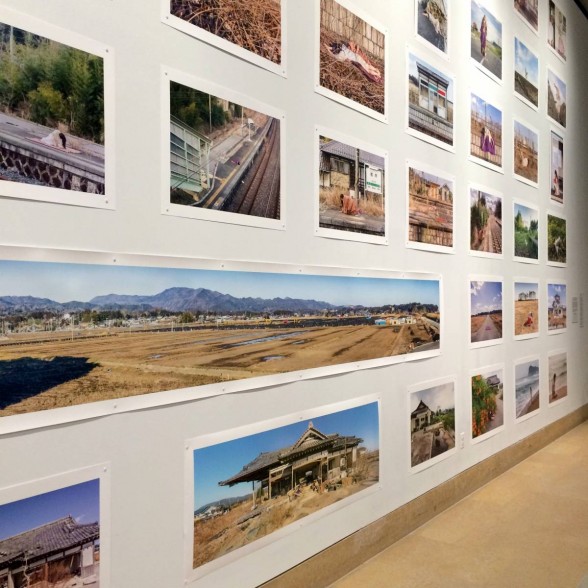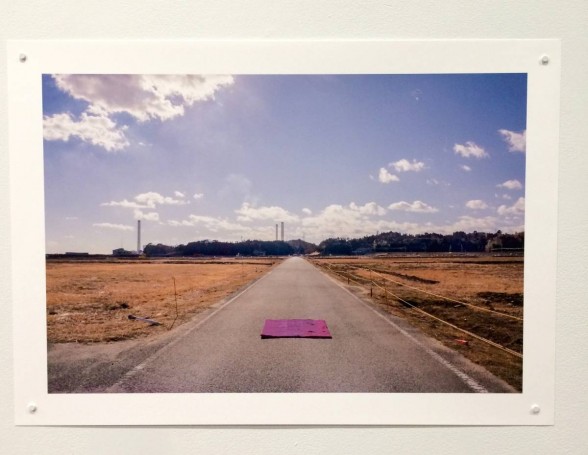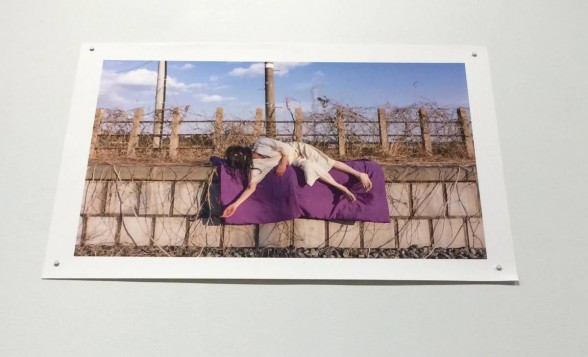(Katherine Statsenko’s post is part of a collaboration between artblog and Moore College of Art and Design’s Culture in the Classroom program. Katherine is one of two students chosen by Libby and Roberta to have their posts published on artblog. We are delighted to run Katherine’s post. –the Artblog editors)
I was greatly struck by the photographs of the Eiko: A Body In Fukushima exhibition at The Pennsylvania Academy of Fine Arts. The photographs represent the many empty places in Japan that were affected by the earthquake and tsunami at the Fukushima Daiichi nuclear power plants. This body of work spoke to me on a personal level because my childhood and family were affected by the Chernobyl nuclear power plant disaster in Ukraine.
A quiet storm of emotion

The photographs themselves are a quiet storm. There are arranged from floor to ceiling in a systematic way. They seem like quick moments in time that become very prominent and slow once looking into them deeper. The photographs display a stillness of the aftermath of the disaster, but as I looked into them closer the unsettling feelings are greatly present. The artist Eiko, had placed herself into these depopulated environments and interacted with them on a humble level. Her body is placed in a fetal position, lying on the ground and loosely covered with a blanket or other clothing. There is a sense of vulnerability, loss, emptiness but also calmness. She has managed to show us destruction in a placid way, where her body was subtly integrated into the environment, bringing our attention to the serious devastation of this event.

Some of the pieces a little too theatrical
Although I could relate strongly to Eiko’s body of work there are a few photographs that I did not connect with so much. A few of them seemed staged, and there was a feeling of forced theatrics. For example, one photograph shows the artist performing some sort of dance, but the body is in the center and does not relate to the environment around her. Another photo shows Eiko’s body on a purple blanket, which is awkwardly placed on an edge of a road. The pose seems rigid and unnatural.

The majority of the photographs however have a wonderful sense of color, composition, depth and perspective. The one in particular that had a great impact on me is a photograph of a thin purple blanket laying in the middle of the road surrounded by an open field. There is an air of silence and tranquility that this photograph captures. The presence and absence of the body which is indicated by the blanket, gives us an idea of a previous human interaction and a glimpse of someone affected by this tragic event. In a way Eiko captures the tension of unsettlement in this single photograph. A viewer can only imagine that person’s story, history and where they might be now. Overall, I believe the photographs seize a specific feeling of emptiness, stillness and sorrow and convey that feeling well.
Eiko: A Body In Fukushima is on display October 3, 2014 – April 5, 2015, at The Pennsylvania Academy of Fine Arts, Maguire Gallery, Samuel M.V. Hamilton Building.
–Katherine Statsenko will receive her BFA in 2015 from Moore College of Art & Design in Fine Arts, with a focus on interdisciplinary studio practice. For more information on her work, please visit www.katherinestatsenko.daportfolio.com.









